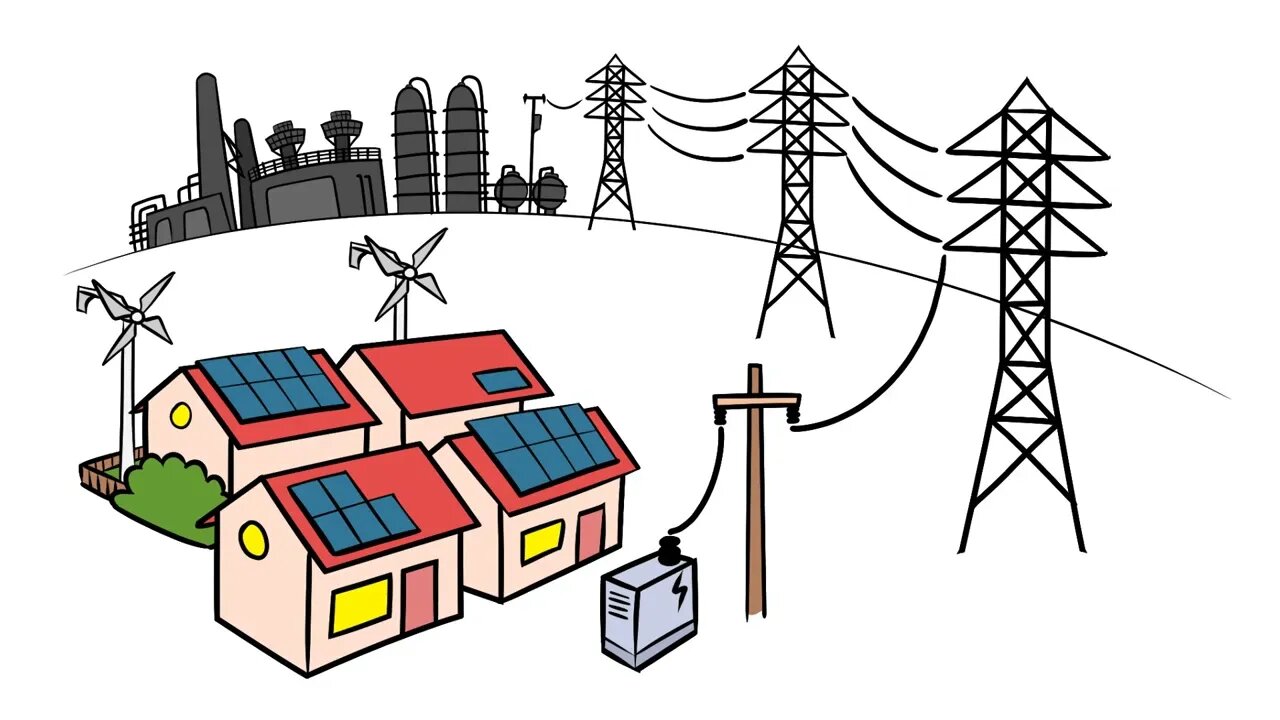Premium Only Content

The Green Energy Lie
As we noted in the previous episode, fossil fuels sparked an energy revolution that forever changed our concept of comfort. Powerful individuals around the globe are advocating for a radical change in our energy consumption, and they claim that what are branded as “green” or “renewable” energy sources can replace fossil fuels.
But these so-called alternative energy sources really are not alternatives at all.
Let’s recall the four characteristics of cost-effective energy: affordability, reliability, versatility, and scalability.
Consider two of the most popular “green” energy sources: solar and wind power.
Solar and wind make up a large part of almost every prominent alternative energy program and have been heavily subsidized by government spending. Solar and wind proponents proclaim that these energy sources have a lower environmental impact than fossil fuels, have enjoyed increased popularity in recent decades, and have become cheaper over time.
This overlooks some important details.
Looking at the places where solar and wind are most popular, we see an interesting pattern: the cost of energy tends to be much higher. Why?
One reason is that while harnessing sun radiation or strong wind may seem like a low-impact form of energy creation, the machines needed to harness this energy—like solar panels and windmills—are resource intensive. In fact, using solar and wind equipment to generate a given amount of energy requires ten times more mined materials than using fossil fuels. When these machines break down, their disposal creates yet another environmental burden.
Another problem is energy dilution, which is the efficiency that is lost when energy is transported over distance or time. Larger commercial solar and wind farms tend to be far away from neighborhoods and other population centers, so extensive infrastructure is required to transmit the energy to people’s homes and businesses, and a lot of energy is lost in transit. On the other hand, home solar panels require large batteries to store energy for periods of low sunlight. Over time, these batteries’ ability to hold a charge diminishes.
The concerns about reliability don’t end there. While battery technology may allow a household to prepare for recurring low-sun periods, extreme weather has proven to be deadly for power grids that rely more on wind and solar.
For example, a powerful ice storm can freeze windmills, halting energy generation at a time when heat is desperately needed. The 2021 winter storms in Texas saw people freeze to death in their homes because of the catastrophic failure of a power grid due to reliance on wind energy.
Even the European Greens’ ambitious plans to close coal power plants have stalled in the face of the reality that even heavy subsidization of green energy cannot replace traditional power sources.
While solar and wind can serve as supplemental energy sources, they are nowhere near close to being a serious alternative to fossil fuels, and it is unlikely they will ever be able to replace traditional energy sources.
This inconvenient truth has not stopped politicians, celebrities, activists, and other global leaders from advocating for banning fossil fuels.
______________________________________
Want to learn more?
For more animated content, check out Economics for Beginners at https://BeginEconomics.org.
-
 39:01
39:01
Mises Institute
1 month ago $0.34 earnedPlaying with Fire: Money, Banking, and the Federal Reserve
4123 -
 5:14:10
5:14:10
GamingChad
7 hours agoMS Flight Simulator 2024 - Lets Make this Turkey Fly -Career mode Pt.2
74.4K7 -
 5:00:01
5:00:01
Pepkilla
8 hours agoHappy Thanksgiving ~ Wumble StwEeeem
42.5K5 -
 7:24:25
7:24:25
Rotella Games
1 day agoThanksgiving Side Missions & Hangout | GTA San Andreas
56.3K3 -
 4:07:31
4:07:31
MafiaTwin
7 hours agoFrist Stream On Rumble
40.8K -
 19:41
19:41
Neil McCoy-Ward
11 hours agoFinally! Some Good News Today... (& Happy Thanksgiving!)
26.5K15 -
 7:22:11
7:22:11
tacetmort3m
11 hours ago🔴 LIVE - (HAPPY THANKSGIVING!) BACK WITH MORE STALKER ACTION - STALKER 2 - PART 7
22.1K -
 58:05
58:05
The Tom Renz Show
7 hours agoThanksgiving In America 2024 - With Mark Sherwood
17.7K2 -
 1:13:41
1:13:41
DDayCobra
9 hours ago $1.29 earnedHappy Thanksgiving!
46.2K4 -
 42:24
42:24
Professor Nez
9 hours ago🚨Kamala's Staff CONFESSES to FRAUD! Trump is Already MAKING AMERICA GREAT AGAIN! 🇺🇸
79.2K172